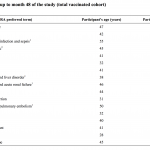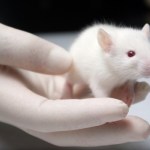Asia
Here we go again.
Antivaxers don't like vaccines. This, we know. They blame them for everything from autism to autoimmune diseases to diabetes to sudden infant death syndrome. They even sometimes claim that shaken baby syndrome is a "misdiagnosis" for vaccine injury. However, there are two vaccines that stand out above all as the objects of antivaccine scorn. the first, of course, is the MMR vaccine. That's on Andrew Wakefield., of course, who almost singlehandedly popularized the fear that the MMR vaccine causes autism. The second most hated vaccine (by antivaxers) is Gardasil or Cervarix,…
Of all the vaccines out there, it’s hard for me to decide which among them antivaccine activists fear and detest the most. Sure, there’s the MMR vaccine, the original granddaddy bete noire, demonized so successfully by Andrew Wakefield as causing autism based on some of the flimsiest evidence ever, evidence later shown to be fraudulent. That has to be near the top of the list of any of the vaccines demonized by the antivaccine movement, despite is safety and efficacy. After all, it is the mMR vaccine that people like Del Bigtree, Andrew Wakefield, and Polly Tommey are still flogging as the…
Photo Credit: Liew Thor-Seng
Ten new species of snails in the genus Plectostoma have been discovered in the limestone hills of Southeast Asia. Limestone hills are not common in this region, so the individual snail species are often isolated to just one hill. Therefore mining has threatened their existence and several species are already extinct or endangered.
Source:
LiveScience
Rabies is a disease without a public relations firm. In developed countries, human disease is incredibly rare--we see typically one or two deaths from rabies each year. In contrast, lightning is responsible for about 60 deaths each year. However, worldwide, rabies is another matter. Today is World Rabies Day, a reminder that 55,000 people still succumb to this virus every year--most of them in impoverished regions of Africa and Asia. While cases in the U.S. are typically due to wildlife exposure (rabid bats or even beavers or rabid kitten), infected dogs remain the main vector of infection in…
The following article is mirrored from TomDispatch.com. I thought that while we are watching the weather heat up, we should not forget that geo-politics heats up with it.
Six Recent Clashes and Conflicts on a Planet Heading Into Energy Overdrive By Michael T. Klare
Conflict and intrigue over valuable energy supplies have been features of the international landscape for a long time. Major wars over oil have been fought every decade or so since World War I, and smaller engagements have erupted every few years; a flare-up or two in 2012, then, would be part of the normal scheme of…
The skeleton of the Hundsheim rhinoceros, Stephanorhinus hundsheimensis. From Kahlke and Kaiser, 2010.
In any given environment, it might be expected that a generalized or unspecialized species might be less prone to extinction than one which depends upon a narrow temperature range, a peculiar kind of food, or other aspect of natural history which is key to its survival. An herbivorous mammal which can subsist on a variety of grasses, leaves, and other plant foods, for example, may be more likely to survive an ecological disruption than a species tied to foliage which might die back during…


